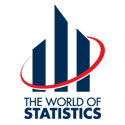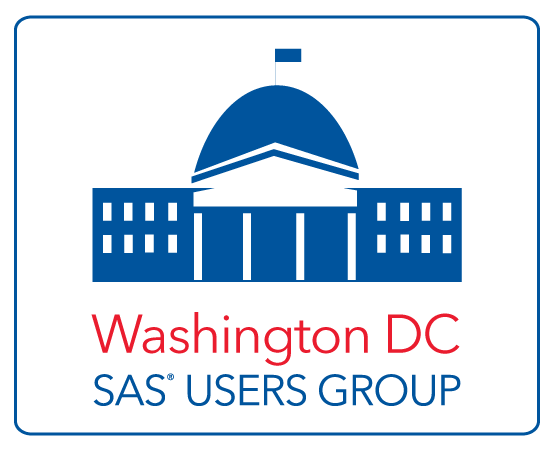October 2006
Contents:
- 16th Annual Morris Hansen Lecture
- Quantitative Methods in Defense and National Security
- Education Announcements:
- SIGSTAT Topics for October 2006 to December 2006
- Short Courses (includes JPSM courses)
- Seminars
- Employment Opportunities
- Note From The WSS NEWS Editor
- WSS People
- PDF Versions:
(Requires Adobe Acrobat Reader)
Newsletter
Area Meetings and Courses
The 15th Federal Forecasters Conference Anouncement
(includes the call for papers, and contest & registration forms)
16th Annual Morris Hansen Lecture
Michael F. Goodchild, Professor of Geography (University of California, Santa Barbara) will give the 16th Annual Morris Hansen Lecture on Monday November 6 at 3:30p.m. in the Jefferson Auditorium of the Department of Agriculture's South Building (Independence Avenue SW, between 12th and 14th Street).
Dr. Goodchild will speak on "Statistical Perspectives on Spatial Social Science." Sarah Nusser (Iowa Sate University) and Linda Pickle (National Cancer Institute) will be the discussants. A reception will follow the lecture. The Hansen Lecture Series is sponsored by the Washington Statistical Society, Westat, and the National Agricultural Statistics Service.
The USDA's South Building is between 12th and 14th Streets at the Smithsonian Metro Stop (Blue Line). Enter through Wing 5 or Wing 7 from Independence Ave. (The handicapped entrance is at 12th & Independence). A photo ID is required.
Please pre-register for this event to help facilitate access to the building. Pre-register on line at http://www.nass.usda.gov/morrishansen/
Return to top
Quantitative Methods in Defense and National Security
George Mason University
February 7-8, 2007
Abstract Submissions Due: November 15, 2006
Website: http://www.galaxy.gmu.edu/QMDNS2007/
The second annual Quantitative Methods in Defense and National Security conference (QMDNS-07) will be held at George Mason University at the Fairfax Virginia Campus. The goal of the conference is to promote collaboration between those with quantitative national security problems (e.g., defense and homeland security practitioners) and those who solve quantitative problems (e.g., statisticians, mathematicians, operations researchers, engineers, and others).
In many aspects, the problems in defense and national security that we must address today are different from those of the past. In part, this is due to our having a more sophisticated understanding of the circumstances under which a national problem should be classified as a defense or security problem. For example, there is a need for effective measures to counter the consequences of asymmetric warfare and terrorism in whatever form they may take and affect our civilian or military populations. (It should be noted that there could be instances in which the distinctions between those populations are, for practical purposes, irrelevant.)
In addition, those who would perpetrate such threats have greater access than ever before to rapid communications and information via the internet on, for example, public health, economic and border-access data and resources, which could enable them to enhance the effectiveness of their efforts. This conference strives to promote collaboration and networking by focusing on challenges, data, and solutions in the defense and national security arenas.
The conference program will consist of invited sessions, contributed talks, and contributed posters. Contributed talks and posters will be refereed based on extended abstracts. We are looking for contributed talks and posters that
- Describe quantitative methods from Operations Research, Statistics, Probability, Machine Learning, and others that can be used to solve problems in defense and national security.
- Describe problems in defense and national security that researchers can address.
Please go to the conference website (http://www.galaxy.gmu.edu/QMDNS2007/) for information on abstract submission and other details. The last day to submit abstracts for the contributed program is November 15, 2006. Please contact Jeffrey Solka (jeffrey.solka@navy.mil) if you have questions.
Return to topSIGSTAT Topics for October 2006 to December 2006
October 18, 2006: The MLAB Mathematical and Statistical Modeling System (http://www.civilized.com)
MLAB isa tool for mathematical and statistical computation and modeling. It has special competence in fitting models to data, including ordinary-differential-equation (ODE)-defined models. MLAB also has a variety of special functions such as Vorinoi diagrams, optimal smoothing splines, weighted moving quantile (non-parametric) curves, and many others. [See www.civilized.com for a preview of MLAB.]
MLAB will be introduced and a variety of examples will be discussed, focusing on fitting parametric models, and on fitting various non-parametric smoothing models to data.
An interesting analysis of synergy/antagonism for the effect of multiple "treatments" will be presented. (This work was inspired by studying the effects of treatments using multiple drugs, but the methodology is more generally applicable.)
Topics will be solicited from the audience. Gary Knott and Daniel Kerner will give the presentation.
November 15, 2006: Using SAS PROC MIXED to Fit Multilevel & Hierarchical Models
This talk will follow the paper, "Using SAS PROC MIXED to Fit Multilevel Models, Hierarchical Models, and Individual Growth Models" by Judith Singer (1998) which can be downloaded from her website, http://gseweb.harvard.edu/~faculty/singer/.
In the November meeting we'll use a school effects model, designed for data nested within naturally occurring hierarchies (e.g., students within classes). Charlie Hallahan will be the speaker.
December 20, 2006: Using SAS PROC MIXED to Fit Individual Growth Models
This talk will follow the paper, "Using SAS PROC MIXED to Fit Multilevel Models, Hierarchical Models, and Individual Growth Models" by Judith Singer (1998) which can be downloaded from her website, http://gseweb.harvard.edu/~faculty/singer/.
In the December meeting we'll use an individual growth model designed for exploring longitudinal data (on individuals) over time. Charlie Hallahan will be the speaker.
SIGSTAT is the Special Interest Group in Statistics for the CPCUG, the Capital PC User Group, and WINFORMS, the Washington Institute for Operations Research Service and Management Science.
All meetings are in Room S3031, 1800 M St, NW from 12:00 to 1:00 (note new time). Enter the South Tower & take the elevator to the 3rd floor to check in at the guard's desk.
First-time attendees should contact Charlie Hallahan, 202-694-5051, hallahan@ers.usda.gov and leave their name. Directions to the building and many links of statistical interest can be found at the SIGSTAT website, www.cpcug.org/user/sigstat/
Return to topNote From The WSS NEWS Editor
Items for publication in the December issue of the WSS NEWS should be submitted no later than October 31, 2006. E-mail items to Michael Feil at michael.feil@usda.gov.
Return to topClick here to see the WSS Board Listing (pdf)
Return to top






